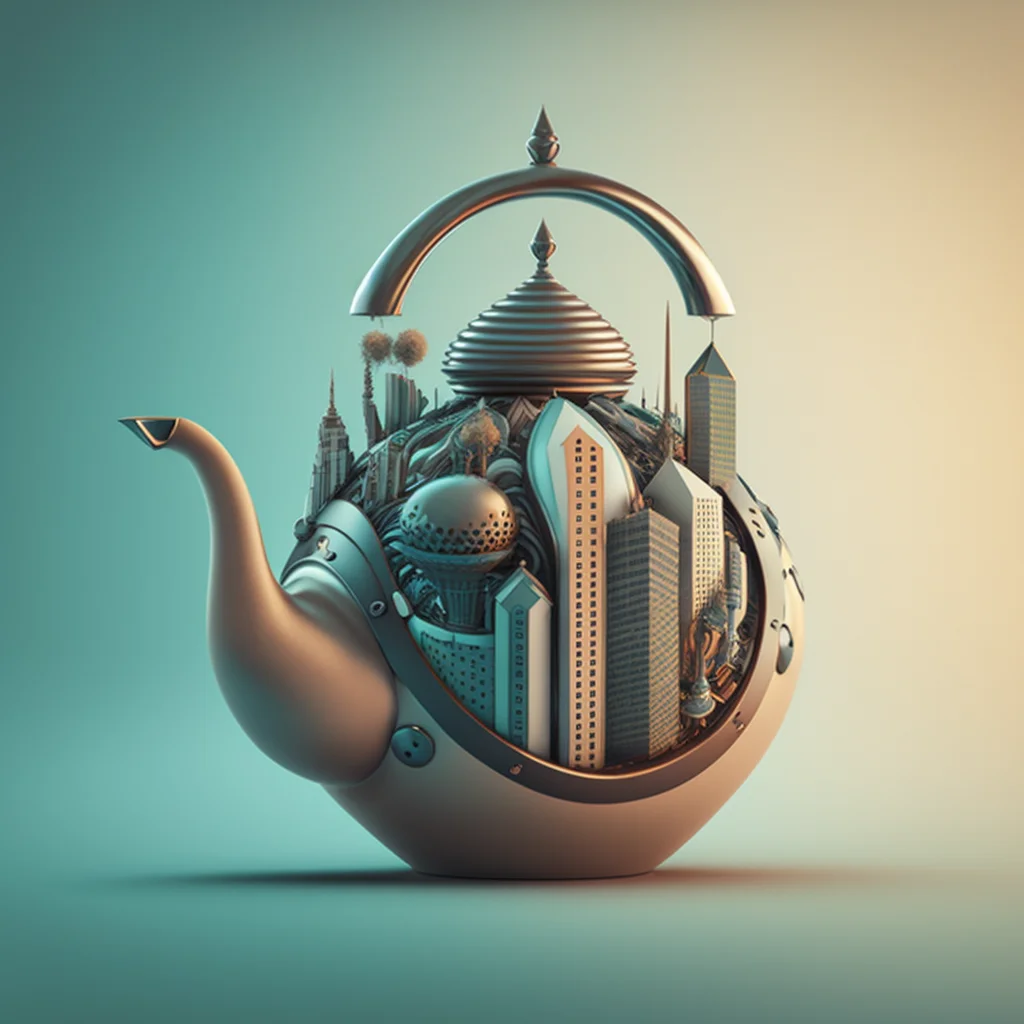The Whistle Heard ‘Round the World: The History and Evolution of Tea Kettles
The whistle heard ’round the world is a familiar sound in households around the globe, signaling the arrival of hot water for tea or other hot beverages. The tea kettle, also known as a teapot or tea-pot, has a rich history and has evolved over time to become the beloved household item we know today.

Evolution of Tea Kettles
The first known use of tea kettles dates back to ancient China during the Tang Dynasty (618-907 AD). At that time, they were made of bronze and were used to boil water for medicinal purposes. It wasn’t until the Ming Dynasty (1368-1644 AD) that tea became a popular drink in China and the teapot was developed as a way to brew and serve the beverage.
Tea kettles made their way to Europe in the 17th century, brought over by merchants and travelers who had encountered them in China. The first tea kettles in Europe were made of silver, and they were primarily used by the wealthy. It wasn’t until the 18th century that tea became more widely consumed and tea kettles became more commonplace.
In the 19th century, the tea kettle underwent a significant transformation with the invention of the steam whistle. Prior to this, tea kettles would often be left on the stove for too long and the water would boil away, sometimes leading to fires. The steam whistle, which would emit a loud, shrill sound when the water had reached boiling point, was a game-changer in terms of safety and convenience.
The first steam whistle was invented by a man named Elijah Morse in 1832, and it was soon adopted for use in tea kettles. The sound of the whistle quickly became synonymous with the arrival of tea time, and it remains an iconic sound to this day.
Over time, tea kettles continued to evolve in terms of design and materials. In the early 20th century, aluminum became a popular material for tea kettles due to its lightweight and affordable nature. In the mid-20th century, electric tea kettles were introduced, allowing for even more convenience in the kitchen.
Today, tea kettles come in a wide range of materials, shapes, and sizes, and they remain a beloved household item in many cultures around the world. Whether it’s a classic silver teapot or a colorful electric kettle, the whistle heard ’round the world is a symbol of the joy and comfort that a good cup of tea can bring.
Early electric tea kettles were simple in design and functioned much like a traditional kettle, but with the addition of an electric heating element. However, as technology advanced, so too did the features of electric kettles. Many modern electric kettles now come with features such as temperature control, automatic shut-off, and even Wi-Fi connectivity.
One of the most notable advances in electric tea kettle technology is the development of “smart” kettles. These kettles can be controlled using a smartphone app and can be programmed to heat water to a specific temperature or to boil water at a specific time. Some even have voice control capabilities, allowing users to operate the kettle using voice commands.
In addition to their advanced features, electric tea kettles are also more energy-efficient than traditional stovetop kettles. This is because they only heat the amount of water that is needed, reducing energy waste and saving money on utility bills.
As technology continues to advance, it’s likely that tea kettles will continue to evolve as well. One potential development is the integration of tea kettles into the “smart home” ecosystem.
Already, there are smart home devices that can control other appliances, such as lights and thermostats, using voice commands or smartphone apps. It’s possible that in the future, tea kettles will be able to communicate with these devices as well.
For example, a person could tell their smart speaker to turn on the kettle, and it would begin heating the water. The smart speaker could then communicate with the thermostat, adjusting the temperature to ensure that the room doesn’t become too hot and uncomfortable.
In addition to integration with other smart home devices, it’s possible that tea kettles themselves will become more intelligent. For example, a kettle could be equipped with sensors that detect the type of tea being brewed and adjust the temperature and brewing time accordingly. This could help to ensure that the tea is brewed to perfection every time.
Leave a Reply